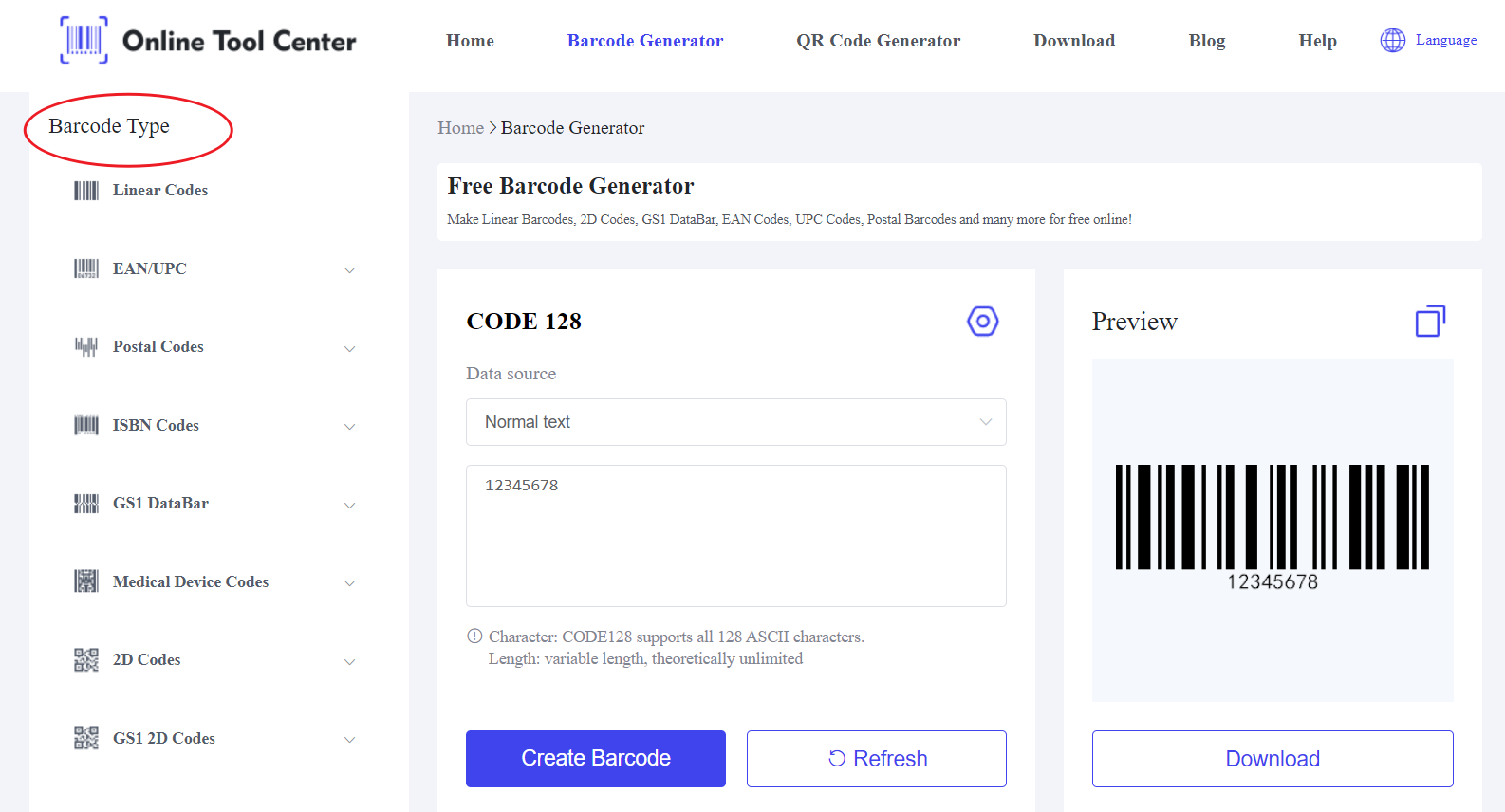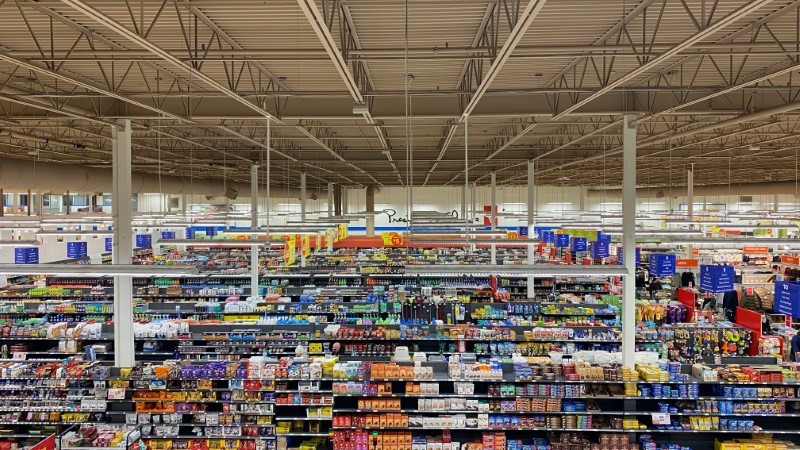Barcodes are a vital component of modern business operations, found on everything from retail products to medical supplies.
But behind the simple lines and patterns lies a complex system known as barcode symbology. This "language" is essential for encoding data into a format machines can easily read and interpret.
Understanding barcode symbology is crucial for selecting the right type of barcode for your business needs, ensuring efficient data management and compliance with industry standards.
What is Barcode Symbology?
Barcode symbology is the technical term for the encoding scheme that converts data into a visual pattern, typically consisting of bars, squares, or dots.
This pattern is then scanned and decoded by barcode readers, which translate the visual information back into digital data.
Each symbology is designed to serve specific purposes, whether it's encoding a simple product ID or storing complex logistical information.

Categories of Barcode Symbologies
● 1D Barcodes (Linear Symbologies): The traditional format consisting of vertical bars and spaces. They are simple but limited in data capacity.
● 2D Barcodes: These barcodes store data in both horizontal and vertical dimensions, allowing for much greater data density in a smaller space.
● Composite Symbologies: These combine features of both 1D and 2D barcodes, often used in advanced tracking and identification systems.
Types of Barcode Symbologies
1. 1D Barcodes (Linear Symbologies)
1D barcodes are the most familiar, with several common types:
● UPC: A staple in retail environments, used globally for product identification.
● EAN: Similar to UPC but used mainly in Europe and internationally.
● Code 128: Highly versatile, capable of encoding letters, numbers, and control characters. It's widely used in logistics and transportation.
● ITF-14: A variant of the Interleaved 2 of 5 symbology, often used for packaging and bulk shipping.
2. 2D Barcodes
2D barcodes are increasingly popular due to their ability to store more information:
● QR Codes: Widely recognized for their use in marketing, ticketing, and inventory management. They can be scanned quickly and easily by mobile devices.
● Data Matrix: Highly compact, making it ideal for small items or components in electronics and pharmaceuticals.
● PDF417: Capable of storing large amounts of data, including text, images, and binary data. Commonly used in identification documents and boarding passes.
3. Composite Symbologies
Composite symbologies, such as GS1 DataBar, are designed to incorporate the strengths of both 1D and 2D barcodes. GS1 DataBar is particularly valuable in point-of-sale applications, where it can encode additional data like expiration dates or batch numbers without taking up significant space.

Applications of Different Barcode Symbologies
1. Retail
In retail, UPC and EAN barcodes are essential for product identification and inventory management. These symbologies enable rapid and accurate scanning at checkout, linking each product to its price and inventory status.
2. Healthcare
The healthcare industry relies on specialized barcode symbologies like Data Matrix for tracking pharmaceuticals.
These barcodes ensure patient safety by maintaining the integrity and traceability of medical products throughout the supply chain.
3. Logistics
In logistics, Code 128 and ITF-14 are commonly used to manage complex supply chains. These barcodes facilitate the tracking of shipments from origin to destination, improving accuracy and efficiency in delivery.
4. Inventory Management
For inventory management, QR Codes and Data Matrix symbologies are ideal due to their compact size and high data capacity.
They enable detailed tracking of inventory, reducing the risk of errors and enhancing overall operational efficiency.
How to Choose the Right Barcode Symbology?
Choosing the appropriate barcode symbology requires careful consideration of several factors:
1. Data Requirements
The amount and complexity of the data you need to encode will influence your choice. 1D barcodes are suitable for simpler data, like product IDs, while 2D barcodes are better for encoding detailed information, such as URLs, serial numbers, or even images.
2. Scanning Environment
Consider where and how the barcode will be scanned. 1D barcodes require a clear line of sight and are generally easier to scan with standard laser scanners.
2D barcodes, on the other hand, can be scanned from multiple angles and distances, making them more versatile in environments where quick and flexible scanning is needed.
3. Space Constraints
If the physical space available for a barcode is limited, 2D barcodes like Data Matrix are often the best choice due to their compact size and high data density. For larger items with ample space, 1D barcodes may be more appropriate.
4. Industry Standards
Ensure that your chosen barcode symbology aligns with any relevant industry standards. For example, retail industries might require UPC or EAN barcodes.
For those looking to create and use barcodes, using a free barcode generator that supports various symbologies is essential for producing accurate and efficient barcodes tailored to your specific needs.
Best Practices for Barcode Generation
● Barcode Design Tips
When designing a barcode, start by selecting the appropriate barcode symbology based on your data needs. Ensure that the barcode is sized correctly and placed in a location where it can be easily scanned without distortion.
● Testing and Verification
Before full-scale production, thoroughly test your barcodes using various barcode scanners to verify readability. It's important to ensure that the barcode is consistently scannable in different environments and under different lighting conditions.
● Compliance with Standards
Make sure your barcodes comply with relevant industry standards and regulations. Non-compliance can lead to operational disruptions and penalties, particularly in regulated industries like healthcare and food production.
FAQs
1. What is the most common barcode symbology?
The most common barcode symbology is the UPC, used worldwide for product identification in retail environments.
2. How do I ensure my barcode is readable?
To ensure readability, design your barcode with appropriate sizing and resolution, test it with various scanners, and adhere to industry guidelines.
3. Which barcode symbology is best for small items?
For small items, Data Matrix is often the best choice due to its compact size and high data capacity.
Choosing the right barcode symbology is essential for effective data management across various industries.
Whether you need a simple 1D barcode for retail or a complex 2D barcode for logistics, understanding the different barcode symbology types and their applications will help you make an informed decision.
For accurate and compliant barcodes, consider using a trusted barcode generator to meet your specific needs.





